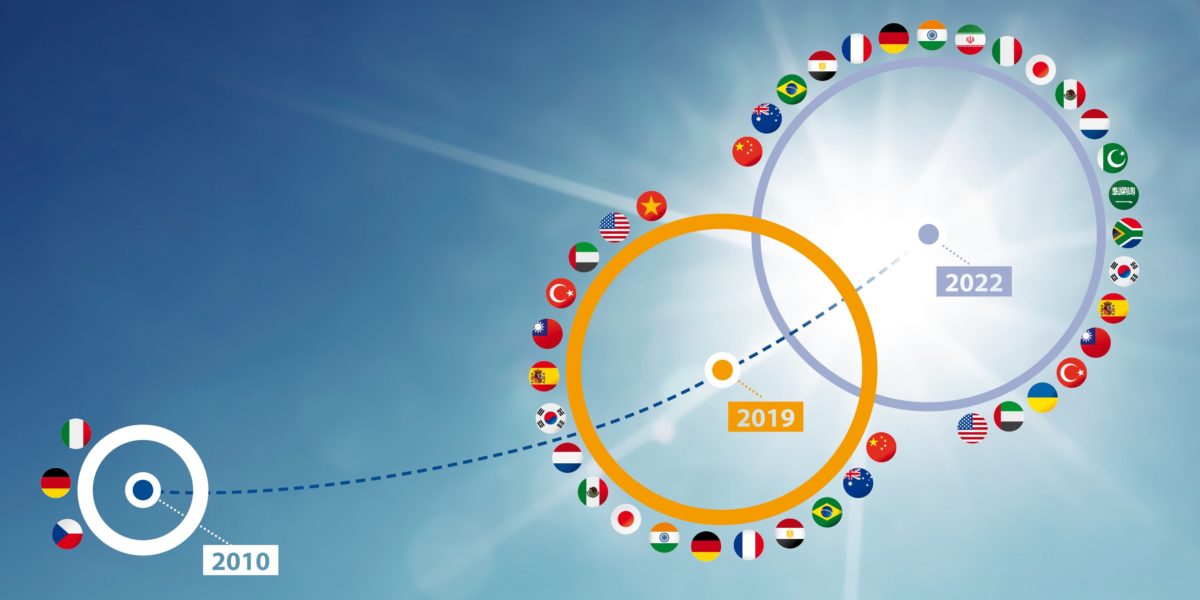Brazil’s Ministry of Mines and Energy (MME) has decided that PV can participate in both planned energy auctions (the A-4 and A-6 auctions) this year, while also providing a clear schedule for the auctions to be held in the 2019-2021 period, for a total of six auctions. This is a clear departure from the ministry’s previous decisions to allow PV to participate in only one of the auctions held in 2018 — the A-4.
Although this year’s A-4 auction may see a lower assigned capacity compared to last year, in which around 800 MW of capacity was allocated, overall the two auctions combined should deliver considerably more than 1 GW of new capacity. Local solar association ABSOLAR had recommended at least 2 GW.
But capacity is not everything. Both auctions may also deliver lower final prices compared to the BRL 118/MWh ($35.20 at the time, now $30.40) of the previous round. The A-6 auction, with its six-year term for project commissioning, could be particularly interesting in terms of price signals in the Brazilian and Latin American PV markets.
One new aspect of this year’s auctions will be the kind of contracts that solar will be given. The Brazilian government has decided that PPAs will be awarded “by quantity” rather than “by availability,” as in previous procurement rounds. The quantity contract, unlike the availability contract — in which the risk is taken by the buyer of the electricity — is a standard financial arrangement. The availability contract will require power generators to submit bids in BRL/kWh. The risk of physical delivery, which was previously assumed by the Brazilian national grid operator ONS’s central dispatch, will be assumed by the plant owners. This means that PV will bear more of the risks, but this could also been seen as further proof of the technology’s maturity.
Good news for the Brazilian large-scale solar business does not come exclusively from the auction side. According to local solar energy association ABSOLAR, several private PPAs for utility-scale solar projects have already been signed. Although ABSOLAR has not provided details on these PPAs or the relevant parties involved, the association claims that there are agreements for hundreds of megawatts of capacity that have already been signed, with contracts spanning 10-15 years.
But this is just another example of the multiple options that the Brazilian energy market may offer to solar developers and investors over the next year. An interesting emerging business model may be reserving part of a project’s capacity for sale at auction, with the remainder reserved to trade electricity on the free market, presumably at higher prices.
Meanwhile, distributed generation projects, which in Brazil includes all net-metered solar installations up to 5 MW, will also continue to deliver more volume and lower installation prices. Although the government is now planning to reduce net metering tariffs, it plans to introduce capacity caps where the grid is more congested. If implemented, these measures could extend the payback period for DG systems from five to six years, according to calculations made by local consultancy Greener. This will likely be do little to halt the further growth of solar on Brazil’s rooftops. Meanwhile, Brazil became Latin America’s second largest market in March, after hitting the 2.5 GW milestone.
This content is protected by copyright and may not be reused. If you want to cooperate with us and would like to reuse some of our content, please contact: editors@pv-magazine.com.




By submitting this form you agree to pv magazine using your data for the purposes of publishing your comment.
Your personal data will only be disclosed or otherwise transmitted to third parties for the purposes of spam filtering or if this is necessary for technical maintenance of the website. Any other transfer to third parties will not take place unless this is justified on the basis of applicable data protection regulations or if pv magazine is legally obliged to do so.
You may revoke this consent at any time with effect for the future, in which case your personal data will be deleted immediately. Otherwise, your data will be deleted if pv magazine has processed your request or the purpose of data storage is fulfilled.
Further information on data privacy can be found in our Data Protection Policy.